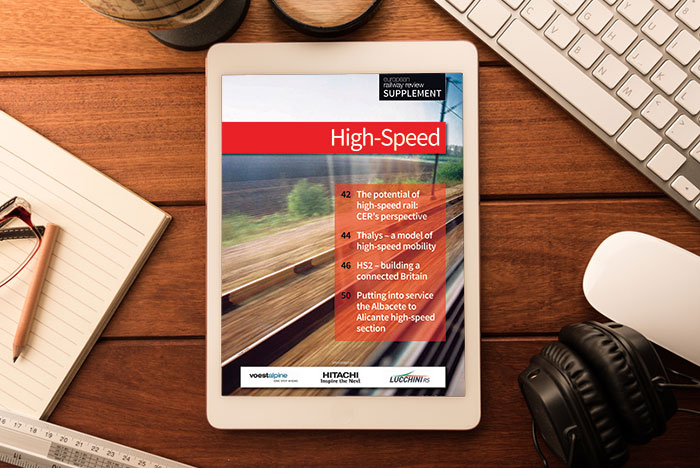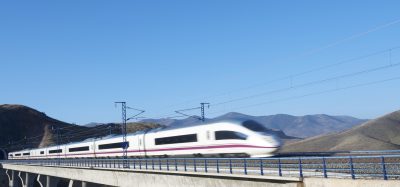High-Speed supplement
Posted: 4 October 2013 | Global Railway Review | 1 comment
In this High-Speed supplement: The potential of high-speed rail: CER’s perspective; Thalys: a model of highspeed mobility; HS2: building a connected Britain; Putting into service the Albacete to Alicante high-speed section…


- The potential of high-speed rail: CER’s perspective
Libor Lochman, Executive Director of CER and Global Railway Review Editorial Board Member
High-speed rail is perceived as the ‘transport mode of the future’. High-speed projects are highly political in nature and often perceived as an essential part of the railways’ modernisation. The first and biggest advantage of high-speed rail is to offer much faster train connections between cities in Europe, improving connections between major nodes. High-speed trains running in the range of 300-320km/h have for instance cut travel time by rail by 45% between Brussels and Frankfurt and by more than 60% between Madrid and Barcelona… - Thalys – a model of highspeed mobility
Franck Gervais, Chief Executive Officer, Thalys International
Thalys is the red high-speed train that crosses four European countries – France, Belgium, the Netherlands and Germany. Founded in 1996, Thalys is a joint service provided by the Belgian, French, German and Dutch railways. Throughout its history and thanks to its culture of innovation, Thalys has always been a pioneer in providing commercial passenger high-speed rail transport services in Europe. Thalys wants to keep on achieving this by opening new lines, enhancing its technology and shortening journey times to improve the passenger experience. This is the same customer-oriented approach that prompted Thalys to increase the number of connections on the Brussels–Amsterdam line from nine to 11 in October and to extend the German line by scheduling two extra trains to Essen in response to growing passenger needs… - HS2 – building a connected Britain
Andrew McNaughton, Chief Engineer and Technical Director of High Speed Two Ltd and Global Railway Review Editorial Board Member
Britain is planning to build a high-speed rail network in phases. The initial network will be ‘Y’ shaped directly connecting five of the 10 largest city regions with London and each other. Through trains continuing onto the existing mainline rail network will serve a further three of the top 10 city regions… - Putting into service the Albacete to Alicante high-speed section
Rafael Rodríguez Gutiérrez, High-Speed Lines Construction Manager, Adif
Last July, commercial services began on the high-speed connection between Madrid and Alicante. This important milestone has been achieved through putting into service a new 165km-long double-track section from Albacete to Alicante. After a €1.920 million investment, the section will contribute to foster economic growth and prosperity for the surrounding areas – strengthening one of the most important communication axes for the south east of Spain…
This High-Speed supplement is restricted - login or subscribe free to access


Why subscribe? Join our growing community of thousands of industry professionals and gain access to:
- Bi-monthly issues in print and/or digital format
- Case studies, whitepapers, webinars and industry-leading content
- Breaking news and features
- Our extensive online archive of thousands of articles and years of past issues
- And it's all free!
Click here to Subscribe today Login here
Issue
Related topics
Related organisations
Community of European Railway and Infrastructure Companies (CER), Hitachi Rail Europe, Lucchini RS, Spanish Railway Infrastructure Administrator (ADIF), Thales Group, voestalpine








I just added this blog to my rss reader, excellent stuff. Can’t get enough!